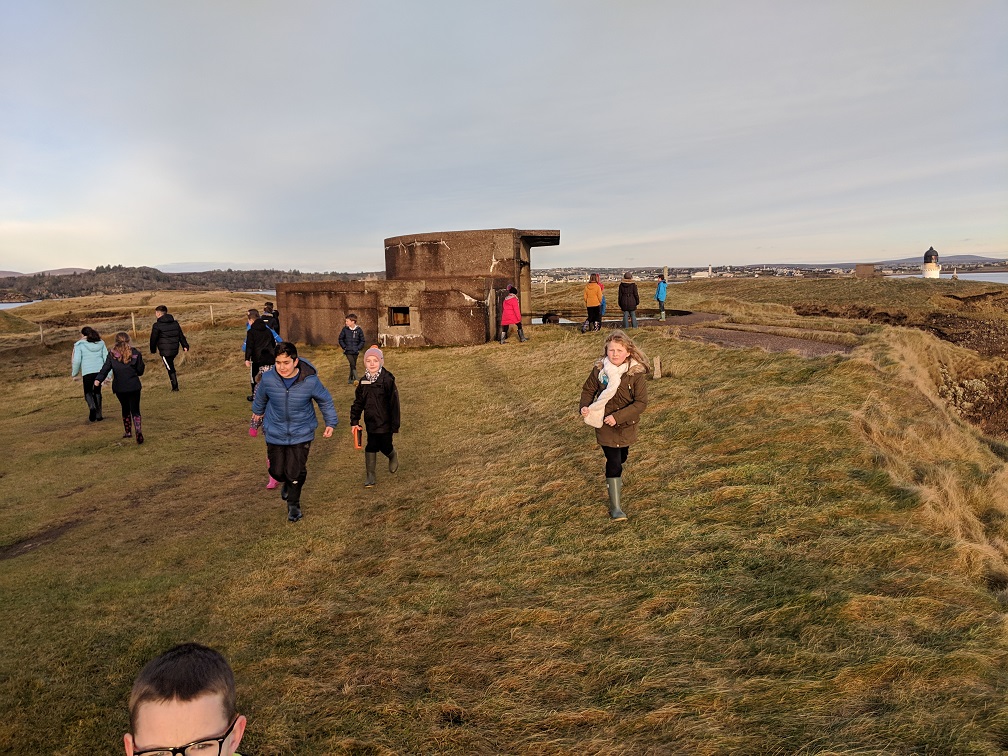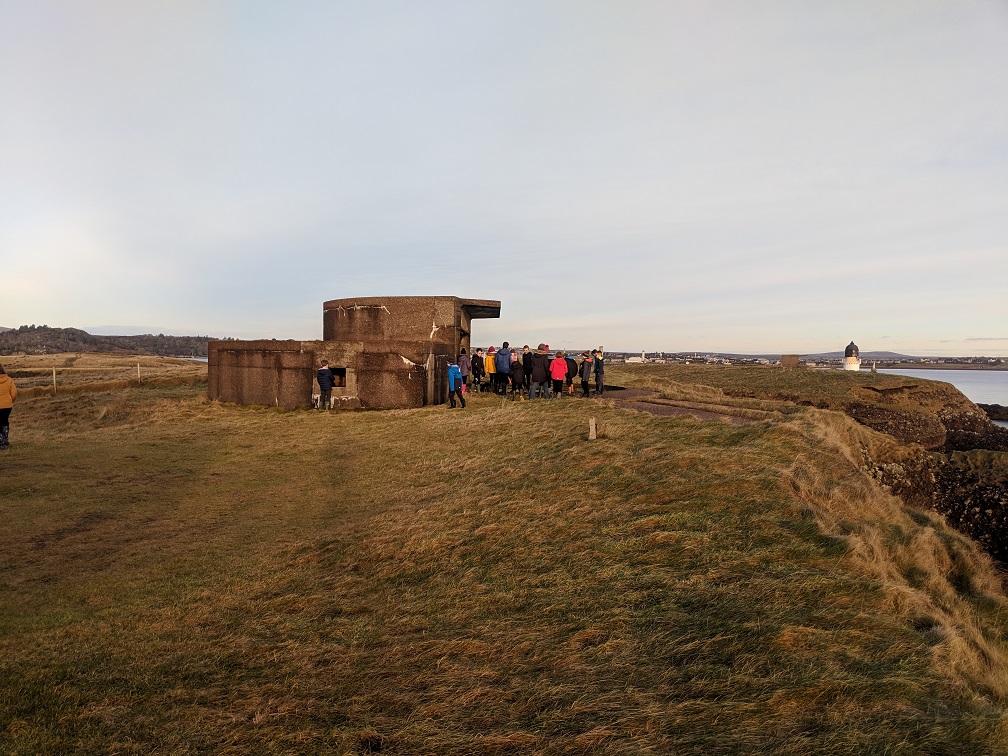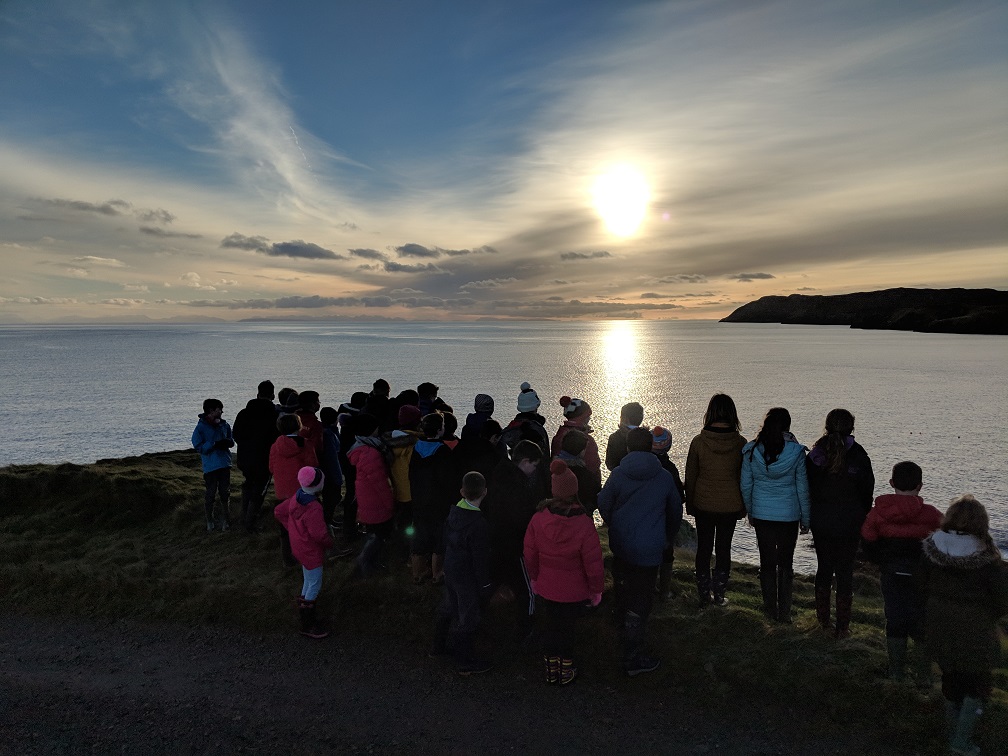The class were doing a project on black houses and wanted to look at and explore the moor behind the school. Tim first looked round the village to see if there were the remains of any black houses on the crofts but sadly in Tong he couldn’t find any, so the decision was to have a walk out onto the moor, look at how it was different to the rest of the village and how the land might be being used.
The class used the Outdoor Journeys model developed by Simon Beames at Edinburgh University as a start point to prepare. Tim went into the class and they looked at the map and discussed the potential hazards, wrote this out before completing their journey plan to be left a the school before they set off. (Here are the CnES versions of the documents; Journey Plan, Hazard Assessment)

The walk went out of the school up the road, left out towards Craignish and the followed the peat tracks past the fank to the 42m high point. Then before turning to head for the wind turbine and then back down Barraidmhicille Mhoire to the school.

It was a very frosty afternoon so frozen puddles were a great source of interest with everyone looking at the ice and then jumping on it to smash it.
As part of the project to look at how people lived in black houses the class learnt the song Eilean Fraoich, they thought it would be good if they stood on top of some peat banks and sang the song.
On the way round the moor the class looked at the plants and birds they saw, it was so cold they came to the conclusion that was why they didn’t see many birds apart from seagulls.

The cold wasn’t bothering the cattle we saw near to the end of the journey.

The journey ended back a the school and the inevitable ‘wellies off scrum’ and lots of smiling faces.

























